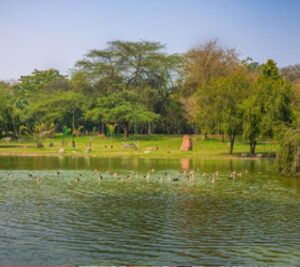Red Fort, Delhi
The Red Fort Delhi stands as a timeless symbol of India’s rich history and architectural grandeur. This magnificent fortress, also known as Lal Qila, is a UNESCO World Heritage Site and a major tourist attraction in the capital city. Its imposing red sandstone walls and majestic gates draw visitors from around the world, eager to explore its rich history and cultural significance.

Traveller Information
- Location Netaji Subhash Road, Chandni Chowk, Delhi, India
- Reach There Metro (Chandni Chowk Metro Station)
- Entry Fee Indian/foreigner Rs. 10/250, combined museum ticket
- Visiting Time 7:00 AM to 5:30 PM on all days of the week
Exploring the Red Fort History
The Red Fort History dates back to the 17th century when it was commissioned by the Mughal Emperor Shah Jahan. Construction began in 1638 and was completed in 1648, marking the zenith of Mughal architectural prowess. The fort served as the main residence of the Mughal emperors for nearly 200 years, witnessing the rise and fall of dynasties and the splendor of Mughal rule.
Architectural Marvels of Red Fort
The Red Fort is renowned for its architectural splendor, characterized by its intricate marble work, delicate carvings, and ornate domes. The Diwan-i-Aam (Hall of Public Audience) and Diwan-i-Khas (Hall of Private Audience) are prime examples of Mughal architecture, adorned with exquisite decorations and adorned with precious stones. The fort’s sprawling gardens, including the famous Hayat Bakhsh Bagh, add to its allure, providing a serene retreat amidst the bustling city.
How to Reach Red Fort
Delhi holds an international airport that connects several international destinations with Delhi. Delhi is connected with all states of the country via railways and roadways. Once you reach Delhi, you can find many modes of transportation to reach Red Fort. The fort is one of the important tourist destinations in the city.
The fort is located very close to Chandni Chowk metro state. If you get out of the Gate 5 from the metro station, you can hire rickshaw to reach the fort. You can also walk from the station to the destination. You can find taxis and autos from any part of the city to reach Red Fort.
Best Time to Visit Red Fort
The fort is at prime beauty throughout the year. If you visit during national holidays like Independence Day and Republic Day, you can find many interesting activities and even the Prime Minister’s speech. On the drawback, the fort will be heavily crowded during these holidays and the security will be very high.Season has no effect on the beauty of the fort. However, visiting India during summer can be dehydrating and humid experience. Delhi experiences very hot climate from March to June. Monsoon starts in July and ends in September. The prime tourism season is the winter season, which starts in October and ends in February.
Entry Fee and Visiting Time of Red Fort
The fort is open throughout the week except on Mondays. The fort is open from 7 in the morning until 5:30 in the evening for sightseeing. It takes around 2-3 hours to scale the whole place. The light and sound show takes place in the evening.
- Hindi Show : 7:30 pm to 8:30 pm
- English Show : 9 pm to 10 pm
- Children below the age of 15 are free to enter the fort. Indians, SAARC citizens and BIMSTEC citizens are charged INR 10 per head. Others are charged INR 250 per head. Cost for the sound and light show is :
- Weekdays: INR 60 per head for adult and INR 20 per head for children
- Weekends and Holidays: INR 80 per adult and INR 30 per children
- Tickets for the show and entry to the fort should be purchased separately.
In conclusion
the Red Fort in Delhi stands as a majestic testament to India’s rich history and architectural brilliance. Its imposing red sandstone walls, intricate marble work, and sprawling gardens make it a must-visit attraction for anyone exploring the capital city. The fort’s storied past and cultural significance continue to captivate visitors from around the world, offering a glimpse into India’s vibrant heritage.




